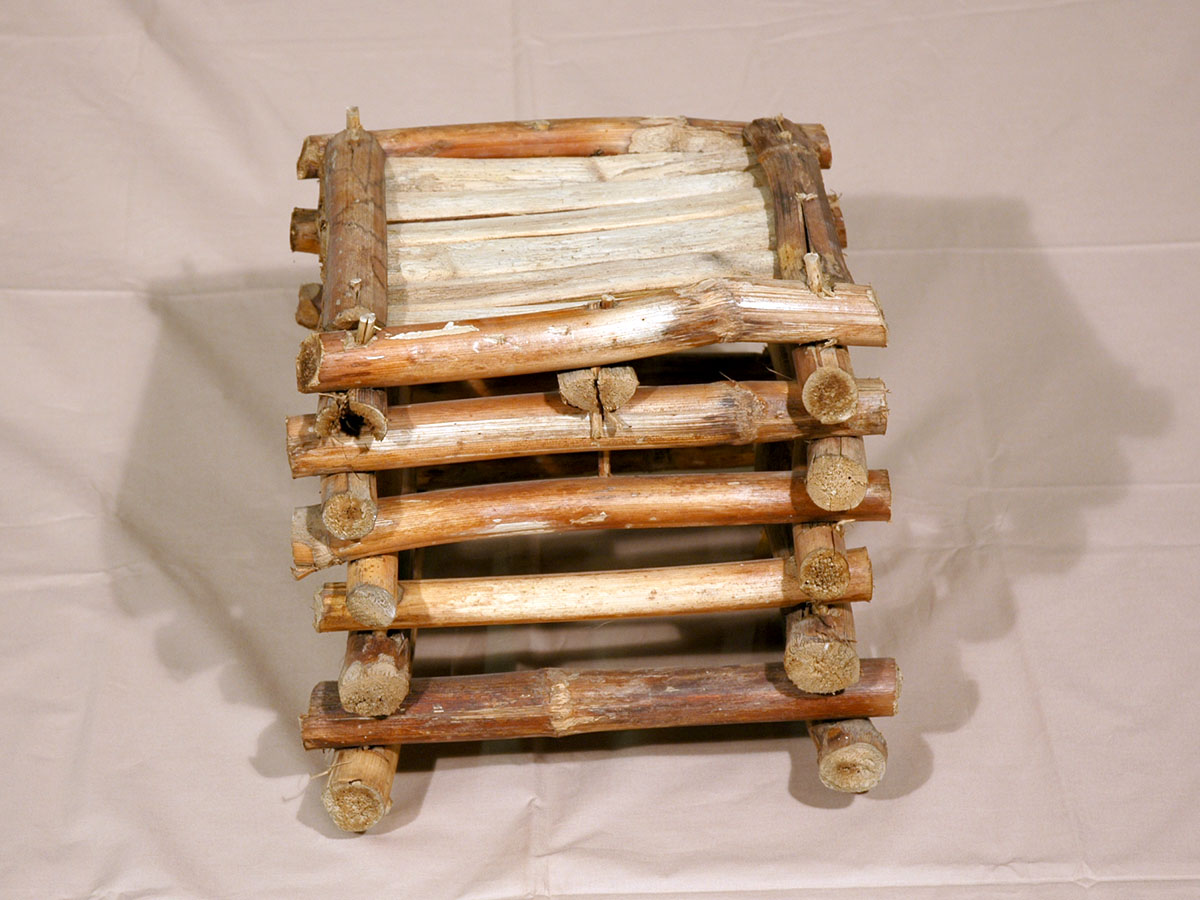Furniture
Traditional Cretan Furniture
Stools
Stools represent the most primitive form of artificial seat. Their basic features are their low height and lack of any element of comfort; they are low-cost, portable, occasional seats. In the difficult times Crete has known, people had to make concessions and adapt in order to survive, which is why stools of various shapes and styles have come down to us today.
Stools are usually found in poor areas. There are three main types, depending on the local natural environment.
Stools with three boards
This is the “classiest” type of stool, comprised of a horizontal board supported by a vertical board at either end. Sizes may vary greatly, from 40 to 50 cm in length and 20 to 30 cm in width.
The vertical boards of the legs are 20-35 cm high and as wide as the seat, as they are usually cut from the same board. The seat is attached to the legs in various rough-and-ready ways.
Stools are normally made of pine wood and rarely of hardwood. They used to be decorated, as we can see from a 17th-century stool influenced by Renaissance styles.
Woven Stools
In some parts of Crete there grows a plant called “artikas” (giant fennel, or Ferula communis). The plant has a cylindrical stem about 3 cm in diameter, a soft pith and tough yellow-green stem. It is cut into sections 25-35 cm in length which are bound together using thin shoots of wild olive with notched ends, to form a kind of firm box. These stools are called “artikoskamnia” (artikas stools).
Primitive stools
These are found in poor, semi-mountainous areas where there are many wild trees. The impoverished inhabitants create a sort of “material culture of wood”, making most items for everyday use from the local trees. Even vessels which would normally be earthenware, such as bowls, plates and cups, are made of wood. The many varieties of stool consist of a rectangular seat cut from a thick plank, supported on three inclined tree branches, two on one side and one on the other, which are set into the thickness of the seat like dowels.
Similar constructions are found the world over, wherever harsh living conditions have led people to invent common solutions to a common problem.

